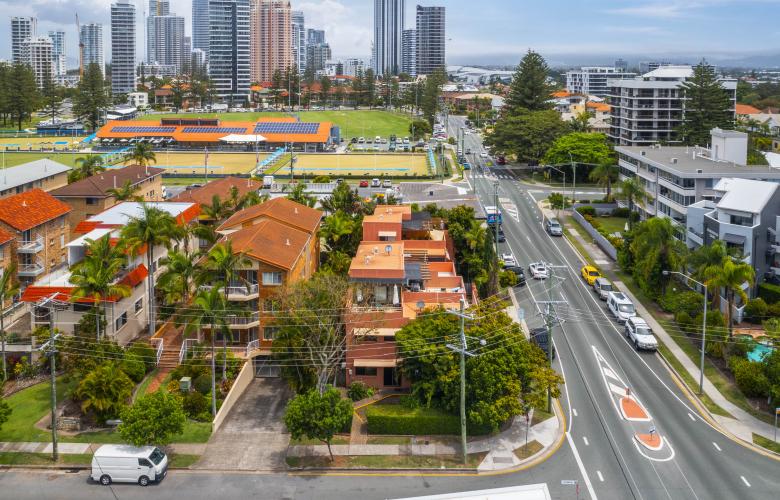Weigh up risks and rewards before embarking on amalgamation sale says Kollosche Commercial
Contact
Weigh up risks and rewards before embarking on amalgamation sale says Kollosche Commercial
Huge demand for Gold Coast real estate is making it an ideal time for unit owners to band together to amalgamate property and attract developer attention, Kollosche Commercial agents Adam and Tony Grbcic say.
Huge demand for Gold Coast real estate is making it an ideal time for unit owners to band together to amalgamate property and attract developer attention, Kollosche Commercial agents Adam and Tony Grbcic say.
The Grbcics say while amalgamations aren’t quick and easy exercises, there are big rewards for unit owners that get the details right – particularly given the insatiable appetite for new apartment projects in the city.
An amalgamation is where unit owners in a multi-unit block collectively agree to combine their properties to form a single lot and offer the holding as a development site or as multiple strata-titled units in one line.
Amalgamations have become much more common in areas such as the Gold Coast because of a lack of available vacant development sites on the market particularly in central areas such as Broadbeach, Mermaid Beach and Surfers Paradise.
Recent amalgamations include a 1294sq m parcel occupied by a vacant block and unit complex on Armrick Avenue in Broadbeach, which sold for $8.8 million to Morris Property Group and five separate owners who sold their units on Surf Parade, Broadbeach, to a private investor for $3 million.
Adam Grbcic together with John and Nicole Mayer, of Kollosche New Projects, have also recently listed the El Dorado building in Broadbeach – an amalgamation of six units on a 654sq m block in the high-growth suburb and aimed at both developers and investors seeking a significant holding.
Adam Grbcic said the popularity of amalgamations for unit owners came down to the potential to sell for a higher price compared to individual market listings aimed at non-developer buyers.
“This is especially true for beachside boutique complexes built in the 1970s and 1980s which are ideal high-density development sites,” he said.
“Also, the older these complexes become, the more maintenance spending is required, which can provide further motivation for owners to sell.”
Adam Grbcic said there were a set of principles unit owners should agree on before proceeding with an amalgamation sale.
“Firstly, owners need to ascertain if everyone is willing to sell and then establish a floor price that is higher than what each owner could sell for to non-developer buyers,” he said.
“Secondly, owners need to decide if they want to sell collectively on a price per entitlement or square metre basis or individually. If it’s the latter, then owners need to keep their negotiations with the developer confidential, otherwise they risk raising expectations among the group which could jeopardise the deal.”
Tony Grbcic said it was also important for owners to beware of pitfalls and approach the exercise with realistic expectations of developers.
He said owners need to realise the risk falls to the developer because they are the ones spending hundreds of thousands on professional, consultant and development application fees as well as initial deposits for owners.
“The other factor owners need to be aware of is time. When developers enter a contract to buy a multi-title building, they are generally looking for a settlement between six and 18 months long,” he said.
“That is because this allows them to unlock the potential value of the land by obtaining development approval and being able to proceed with the project.
“So, they shouldn’t expect an instant windfall or hefty deposit, however the rewards can be significant if they are prepared to wait.”
Adam Grbcic said, as with all real estate transactions, timing is crucial.
“There are several factors which will influence the demand for amalgamated sites going forward,” he said.
“They are town planning amendments under consideration that will increase set backs and reduce height in some areas. Construction costs are also rising, which effects how much developers can pay for sites.
“It is inevitable that demand will fall when the market reaches its peak, however unit owners remain in a position where they can help to alleviate the unit supply shortage on the Gold Coast driven by local and interstate demand.
“If you live in a low-rise building which will require significant capital expenditure in the next few years, this may be the right time to think about an amalgamation to capitalise on the strong demand.”










